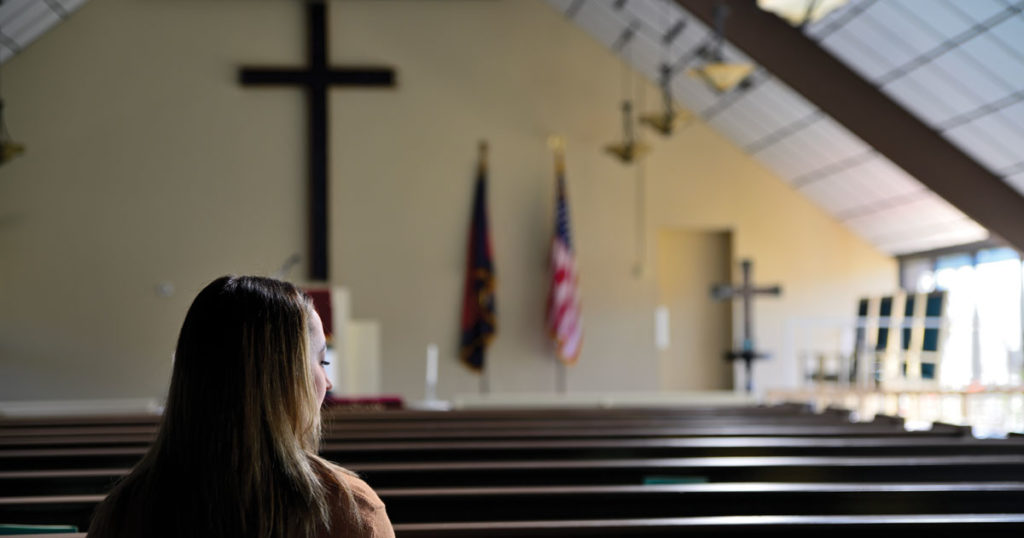Is The Salvation Army a Church?
"While we don’t make it a secret that The Salvation Army is a church, we know it’s easy to overlook because we don’t look like other churches."
Yes! At our very essence, The Salvation Army is a church. It’s right in our mission statement: “The Salvation Army, an international movement, is an evangelical part of the universal Christian Church. Its message is based on the Bible. Its ministry is motivated by the love of God. Its mission is to preach the gospel of Jesus Christ and to meet human needs in His name without discrimination.”
While we have a strong emphasis on meeting physical needs, our primary activities are Bible-based religious services in our 14,893 corps community centers and other institutions around the world, led by 26,374 ordained pastors (“officers”) and 1,249,596 members (“soldiers”).
The Salvation Army is a part of the universal Christian Church but also stands independently as its own denomination with definitive faith statements, traditions and governance structures. Churches (called “corps”) within our denomination share the same theology, history, leadership structure, worship order and style. Every Salvation Army corps holds the same position about basic Christian beliefs outlined in our eleven doctrines and expounded upon in The Salvation Army “Handbook of Doctrine,” an international publication approved by the General, our international leader.
Our theological foundations are the same as all Christian churches, found in early church councils and creeds that articulated beliefs about God, Jesus, the Holy Spirit, and the authenticity of scripture. From there we are found in the Protestant branch, meaning that we believe the Bible is the ultimate authority, salvation is an unearned gift of God’s grace that is received only through faith, and Christians may directly relate with God through His son Jesus. Additionally, The Salvation Army is part of the Wesleyan-Methodist Holiness movement, which emphasizes the need for total surrender so that God can remove our sinful nature and fill us with the Holy Spirit who empowers a lifestyle of holiness.
But let’s back up a bit, because it’s fair to say that becoming a church denomination was not the goal of our founders when the movement first began in East London in 1865. As a passionate evangelist who had been converted in a tent revival meeting, William Booth boldly and publicly preached the gospel wherever he found an audience to create a permanent revival movement. He and his wife Catherine soon attracted a following of like-minded individuals and converts. Early on, they also discovered that people were more likely to respond positively to the gospel message if their basic needs were met, so they began to attend to physical needs along with spiritual needs.
In 1860s Victorian England, there was a distinct disdain for the lower classes, with poverty treated like a criminal offense. Those attracted to the forerunner of The Salvation Army, called the East London Revival Society and later The Christian Mission, were not welcomed or did not feel comfortable in the churches of the day. When the Booths directed their converts to local churches, they were often given inferior seating and received little pastoral guidance to live out their newfound faith in a context vastly different from that of the average churchgoer of that time.
While it had not been the initial plan, the need for a church fellowship to nurture, train and disciple those converted in the mission was readily apparent. Within 20 years of its original founding, The Salvation Army became a full-fledged church institution with the need for a governing structure and doctrinal clarity to guide its growing number of members. In 1880, the organization underwent the final process of legal recognition as a religious community in England. This included the establishment of the eleven theological doctrines that still define our denomination today.
Throughout the 20th Century, participation in ecumenical groups, particularly the World Council of Churches, motivated The Salvation Army to more fully appreciate its ecclessial character. This work culminated in the publication of the revised “Handbook of Doctrine” in 1998, which affirmed The Salvation Army as a Christian church.
In 2008, General Shaw Clifton published “The Salvation Amy In The Body of Christ: An Ecclesiological Statement,” which had been created in consultation with the International Doctrine and International Management Councils.
This statement outlines our distinct characteristics as a church: most primarily, we are evangelical. We believe the gospel should be shared with everyone, unceasingly. Religion is personal and regeneration through faith leads to individual commitment and a desire to seek to win others to Christ. We have a tradition of service that arises out of compassionate love for Christ, which is the motivation for all our social and community services. We prefer flexibility in religious services that allows for clear presentation of the gospel message followed by an invitation for public response. We value using all forms of musical, cultural and artistic expression in worship and evangelism. We recognize the equal place of men and women in all aspects of ministry leadership including the holding of ecclesiological authority. The Salvation Army emphasizes a lifestyle of holiness for all believers, made possible by God’s sanctifying grace and not by any outward observance. We live out our faith, boldly, as soldiers of Jesus Christ and as a public confession of our witness for Him.
While we don’t make it a secret that The Salvation Army is a church, we know it’s easy to overlook because we don’t look like other churches. May the aggressive nature of our fight against evil, compelled by the love of Christ, and the desire to share the gospel with the whole world be the mark of our mission as a church. If you desire a church busy with the Lord’s work, we have a place for you—join our Army!
Photo by David Morring via Red Shield Tool Kit







